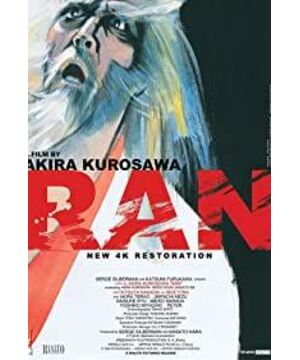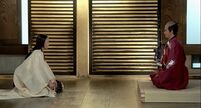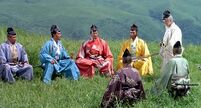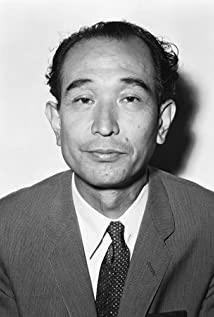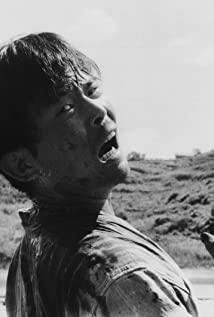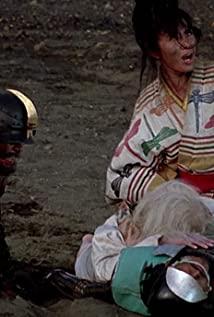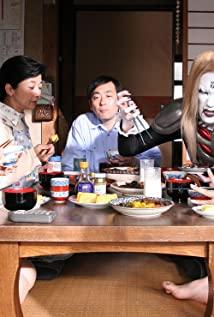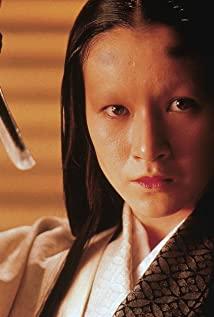Art is something that the benevolent sees the benevolent and the wise sees the wisdom. There is no right or wrong. There may be a variety of composition, lighting, and artistic techniques in one picture. To put it in depth, everyone's understanding is different. To put it simply, everyone can see from the picture how much the designer wants to express. So here I am just a personal opinion, maybe there is something wrong Places, you can refute, debate, but this is my personal opinion, first I think it is right for me before I write it.
About the background of this scene, from Akira Kurosawa's "Ran", this scene is about the old city owner Yiwen Xiuhu giving up the deputy city to Taro Takashi, and then came to Taro's house as a guest, who knows when we meet, Full of disrespect, first the daughter-in-law, then the son, Xiuhu scolded Taro for being afraid of his wife and then left, leaving such a picture, the content is the discussion between the two people after the event, and the content of the discussion is to explain the background of the two people.
Let's take a closer look at this picture. The picture suddenly looks like a symmetrical composition, and two people are sitting there seriously. I thought so too at first, but I suddenly thought that combining the content of this paragraph, from the relationship between the characters and the emotions of this paragraph, should not be symmetrical and balanced. Then continue this fifty-second discussion, and it is easy to see it. In fact, the camera position is slightly to the right, and the whole picture is oblique. When it comes to obliqueness, I think everyone should have guessed it. In my opinion, this picture should belong to a diagonal composition.
Let’s talk about my understanding of diagonal composition. I think that diagonal composition is a kind of division, which divides the picture into upper and lower parts to a certain extent. First of all, such a picture is absolutely unbalanced. Of course, Under the premise of absolute diagonal lines, I think it is still possible to create a picture that is between rigid and rigorous and free and unrestrained. Of course, I don't think the line here needs to be a real line. Friends who have watched "Rashomon" and "Narayama Festival Exam" should know that there are many crossings in these two dramas, walking around , the picture of going over the mountains. It is difficult to complete the picture structure when the weeds are overgrown, or the natural environment is quite rich. Therefore, I think the director's arrangement is to complete the composition through the movement, that is, the direction of the characters, walking diagonally, or walking in certain curves. . I think that there are many linear compositions, but their meaning is not so straightforward, such as straight lines are firm, curves are soft, I think a curve can express a person's indecision, stupidity, and chirping. The restaurant owner tricked Unosuke into helping lift the coffin by using the aggressive method, and then tricked him to leave. The route that Unosuke left was a very tortuous S-shaped route. Of course, taking this example, some people may say that walking in this way is to have more pictures of leaving, here there is a kind of relief from losing the tension, or to lengthen the space of the picture. It is also correct to say that, just as Jackie Chan said that he runs, he usually steps left and right, because it looks like he runs faster. In short, the movement of the characters in the picture can indeed be used to draw a sense of space or ease some emotions, but I personally think that through its movement, certain compositional effects can definitely be formed.
Going back to this frame of picture, in the picture, mainly through the connection between the painting and the cushion, the lens is cut. The wife on the left is an inverted trapezoid, and the one on the right is a positive trapezoid. Everyone knows that a trapezoid has a certain degree of stability, but your base is the one below, I don't know what it is called, anyway, the longer side you go down will definitely be more stable. From this picture, Taro, as the head of the family, combined with the Japanese principle of superiority of men and women, Taro is absolutely extremely stable, but! Judging from this picture, in fact, the inverted triangle of the wife on the left is pressing on Taro on the right. This is the clear character relationship between the two people. The wife is undoubtedly superior to the husband Taro. Afterwards, it can be seen from the dialogue between the two of them and the subsequent plot that Taro is indeed very cowardly and weak to his wife.
Some might say, I'm reading too much, and no one cares about that. Yes, originally, there was really no one, but what I want to say is that the director just took into account that this is an extremely obscure composition, so he made this shot into a long shot of about one minute, in order to let you pay attention. As for the details in the picture, this corresponds to our knowledge that the size of the scene has a certain relationship with the time of the shot. The large scene has a large amount of information, the time is relatively long, and the small scene is relatively short. In order to let the audience read every piece of information, the director has extended the time for you in the special case. It can be seen that the director definitely did not shoot it casually. For the sake of beauty, this shot was definitely carefully designed!
OK, this is my summary of thinking about this frame for a day today, thank you for reading it.
View more about Ran reviews


